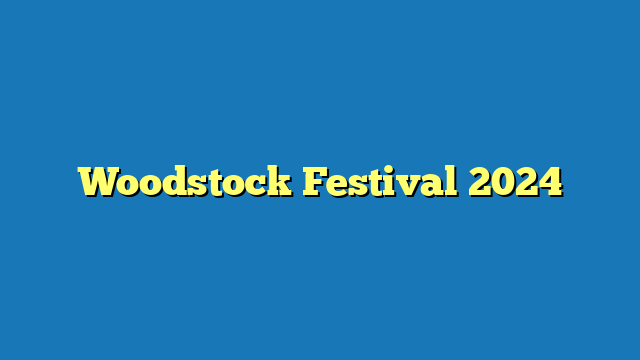Woodstock Music & Art Fair: An In-Depth Look
Introduction
The Woodstock Music & Art Fair, held from August 15 to 18, 1969, was a pivotal event in the counterculture movement of the 1960s and the history of popular music.
This article will provide an in-depth look at Woodstock, from its inception to its lasting impact.
Inception and Planning
The idea for Woodstock was conceived in 1968 by four young men: Michael Lang, Artie Kornfeld, Joel Rosenman, and John Roberts.
They envisioned a three-day festival that would celebrate music, art, and the spirit of peace and love that defined the counterculture.
The organizers secured a 600-acre farm in Bethel, New York, as the venue for Woodstock and began booking bands that represented the diverse musical landscape of the time.
The Lineup
The Woodstock lineup featured a remarkable array of artists, including:
- Joan Baez
- The Band
- Blood, Sweat & Tears
- Crosby, Stills, Nash & Young
- Grateful Dead
- Janis Joplin
- Jefferson Airplane
- Jimi Hendrix
- Santana
- The Who
The Attendees
An estimated 400,000 to 500,000 people attended Woodstock, creating a massive gathering of the counterculture generation.
The attendees came from all walks of life and shared a common desire for peace, love, and music.
The festival became a symbol of unity and a celebration of the ideals of the 1960s counterculture.
The Music
The music at Woodstock was as diverse as the lineup itself, ranging from folk and blues to rock and psychedelic.
Some of the most iconic performances included:
- Joan Baez’s rendition of “Joe Hill”
- Santana’s instrumental “Soul Sacrifice”
- The Who’s energetic set
- Jimi Hendrix’s fiery interpretation of “The Star-Spangled Banner”
The Atmosphere
Woodstock was more than just a music festival; it was a cultural phenomenon that reflected the spirit of the time.
The atmosphere was one of peace, love, and community, with attendees sharing food, water, and shelter.
Despite the massive crowds and lack of adequate infrastructure, the festival remained largely peaceful and harmonious.
The Challenges
Woodstock was not without its challenges. The organizers faced numerous logistical issues, including traffic congestion, food and water shortages, and sanitation problems.
However, they were able to overcome these obstacles with the help of volunteers and the cooperation of the attendees.
The Legacy
Woodstock had a profound impact on popular culture and beyond.
The festival helped to popularize rock and psychedelic music and became a symbol of the counterculture movement.
It also inspired countless other festivals and events, and its legacy continues to be celebrated today.
Conclusion
The Woodstock Music & Art Fair was a transformative event that captured the spirit of the 1960s and left a lasting mark on popular culture.
Its legacy as a symbol of peace, love, and music continues to inspire generations around the world.



